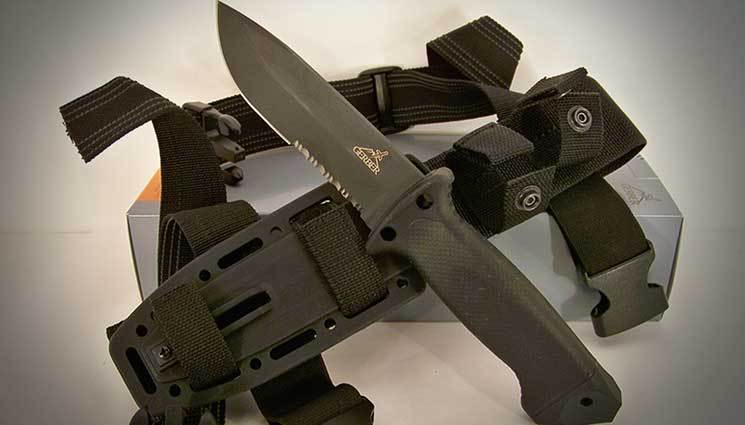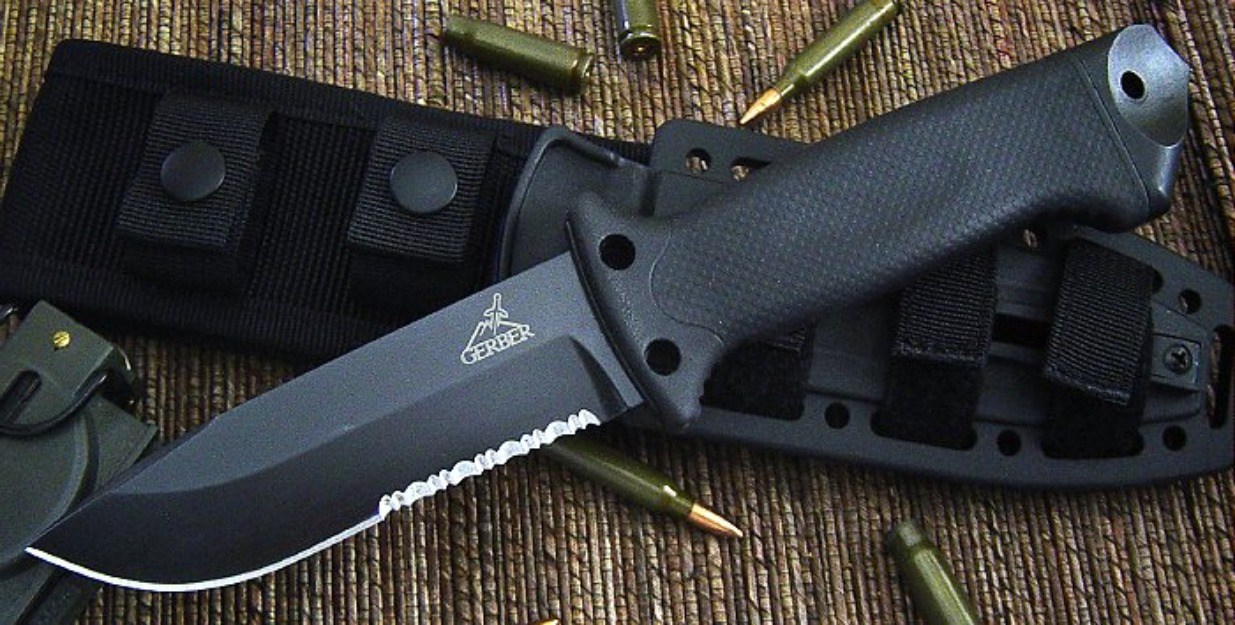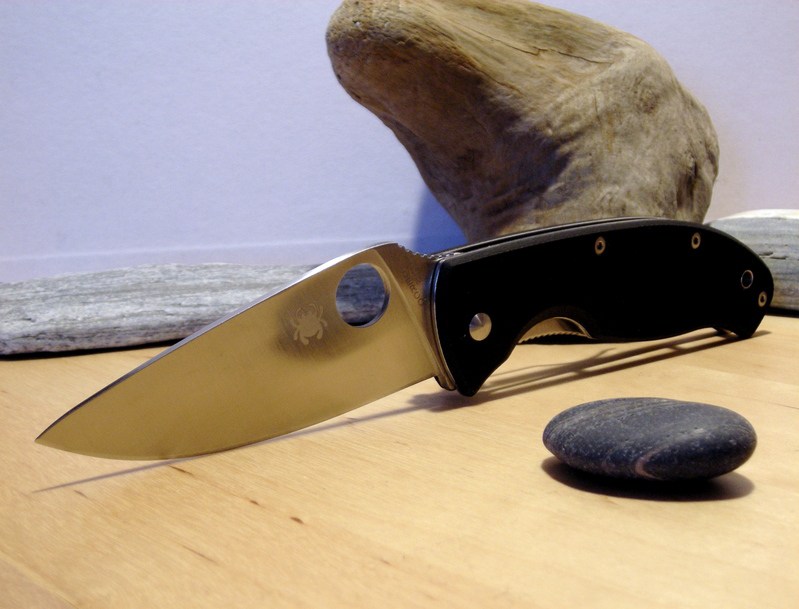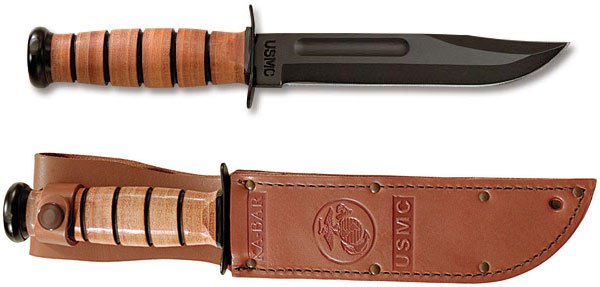How to Find the Best Survival Knife
I like knives. Actually, there aren’t many knives out there that I can’t respect on a certain level for their utility and in some cases beauty. Knives come in all shapes and sizes and have various compositions and specialties. They have different configurations and nomenclature and if you take a look around carefully you will see a high percentage of guys carry at least one clipped to a pocket. I must not like them as much as some people though because I don’t have that many of them.
Apparently I am an oddball too because if you run the circles of preparedness websites there are thousands of knife reviews and commentary. You can look at EDC pictures and there is always a knife or five in there. Bug Out bags will sometimes have two or three knives hanging off of them along with the machete, hatchet and the small key chain knife/flashlight combo. I started thinking the other day about all of this as I walked the aisles at a gun show I was visiting. Second only to guns are knife displays and they are well represented. I usually stop and glance at every table unless they are selling something like pet brushes that get all of the hair off with one whisk of the brush or ladies handbags or salsa. Not that there is anything wrong with selling any of those items, it’s just that when I am at a gun show, I expect guns; not cat grooming. although my cat does need a serious brushing though now that I think about it.
Gerber LMK II – Great knife for the price.
There are long tables of knifes in every color and dimension. I stopped and checked out an old M9 bayonet at one of the first tables and felt the big tug of nostalgia. I had an M9 that I bought myself. We weren’t issued those in the Army but I spent my own money on one and sharpened it frequently. Up until I mistakenly left my gear unsecured and my platoon sergeant took it to “teach me a lesson”. I never saw that knife again and I have always hoped that some form of justice was visited on him later in life. Seeing that old knife brought back some of those memories and I thought for just a minute about getting one again. I know that if I picked one up now my platoon sergeant wouldn’t take this one but after a long 3 seconds I thought better of it and placed it back on the table. I already have a nice Gerber LMF II that I got a few years back that is about the same size and suits me just fine.
I have talked about my Spyderco Tenacious that is part of my EDC and I love that knife but I have been looking for a backup in case I lose that one. The backup is really just an excuse to buy one for my daughter who has bugging me for a “real knife” for a while. The Spyderco knife I have is wonderful, very reasonably priced at around $38 and I would love
to have another one. For some reason, Spyderco knives are poorly represented at the gun shows I visit, but this time there was a woman who had several of them in her case next to the Kershaw and Benchmade folders so I was excited for the opportunity to purchase another one. Looking at her prices they were about $20 too high so I walked on again. Was there something wrong with me? Why wasn’t I buying any knives? The guys on YouTube all seem to have dozens each!
It occurred to me that maybe the reason why I can’t bring myself to actually purchase a new knife is that I have a few already that I feel more than meet the needs for anything I can think of. The simple fact is that I don’t think I need any other knives. I know there are people who collect knives so this is not directed at you but for the average person looking; how many knives do you need? Before I deal with the issue of quantity, let’s talk about how to find the best Survival knife for your purposes.
What will you use your knife for?
First we should talk about what you need a knife for. The answer to that is simple, isn’t it? Knives have a million and one uses. From cutting shavings off a stick to make tinder for a fire to cutting paracord or other cordage to lash your survival shelter together, you just can’t really match the utility of a good knife. Most days my knives only see action opening packages that my wife gets from Amazon, but frequently my trusty knife is called to do some really serious work like whittling sharp points on sticks for my kids’ marshmallows over the fire or opening up something sealed in plastic like that new coat hook my wife wanted me to hang last weekend. All kidding aside, knives are extremely useful tools and no self-respecting Prepper would be caught without one. A sharp instrument and the knowledge of how to use it are one thing separating us from animals, right?
OK, so a knife is useful that we can say without question. It is smart to always have a knife on you because you never know what you might need it for and when. This means you ladies too. There is no reason you shouldn’t carry a knife in your purse and it could even save your life if you didn’t have any other means of self defense.
What to look for when selecting the best Survival knife
Blade Shape – There are a lot of different blade shapes and each was designed for different tasks. Similar to how each of those knives in that big block you have sitting in the kitchen have a different strong suit, the blade shape of your knife will determine what it is best for. Some shapes are designed to take the impact of a rock or stick on the backside so you can use the knife as an axe.
Blade Steel – There are dozens of different types of blade steel out there and probably millions of opinions on which is best for your knife. The steel is made up of varying amounts of carbon and iron but there are other alternatives out there like ceramic knives. Each different type has their benefits but it largely comes down to strength and hardness. A harder knife holds an edge better, but if your knife is too hard, it will be less tough; which means if you hit or drop the blade it could break. For a great list of blade composition types you can read this post on the Blade HQ site.
Serrated Edge – Serrated edges have their uses and I would recommend having some of the blade serrated. You can use this to cut through cordage like your thousands of feet of paracord or even bone if needed. The edges can be re-sharpened if you have the right sharpening stone.
Full tang – For the strongest knife you want a blade that extends all of the way to the end of the knife. This is called “full tang” and simply means that the knife is one single piece of metal. This is going to be far stronger than a folding knife and less prone to breaking when you need it.
Handle – You want a knife that feels good in your hands and the surface needs to be conducive to a good grip. You don’t want a knife that will easily slip through your fingers if it is wet. For this reason I would recommend that you always try out the knife you want to buy in person. You need to physically see how it feels in your hand. Is it too large or too small? Do the finger grooves fit you nicely?
What knives should you avoid?
If you grew up in the 80’s you probably witnessed some of the Rambo phenomenon. Rambo’s knife was a beast. I think it was something like 14” long and you could saw down a tree with it. There was a group of knives that came out after this movie that had a survival kit inside the knife so that when you unscrewed the cap on the end of the handle (which also happened to have a compass) you got fish hooks and matches and various little items similar to what you see people pack inside a Survival tin. The knives were very poorly made and would fall apart quickly. That of course didn’t stop me and my teenage self from wanting one very badly.
A knife shouldn’t be complicated but it should be well built. Don’t buy a gimmicky knife trying to cut corners. You should buy a great knife at a decent price and let it do its job. Save the matches and fishhooks for your Bug out Bag.
How many knives do you need?
The million dollar question is how many knives do you need? For me personally, I look at this in a few different ways and again, I am not talking to the collector. If you just love knives then by all means go out and buy as many as you want. For the average Joe, I would start with a great folding knife that you can carry with you every day. This should be part of your EDC and it should be something you are never without.
I have two knives that I carry on me every day in most cases only because my Leatherman has a knife too. Could I get by with only one knife? Of course, but I have options. So that’s two knives I own now. What about when it isn’t the easiest or best idea to carry my larger folder? Let’s say I am dressed up for work or a funeral, what would I carry then? They make the smaller Leatherman Juice just for this purpose that fit nicely in your pocket and don’t require their own holster. Ok, that’s three knives so far.
Lastly I have my big knife. For me, this is my Gerber LMF II that is big and sturdy enough for any post-apocolyptic needs I might have from chopping wood for a fire (yes, you can do that with a knife) to stabbing zombies in the head. I almost never carry this around because it is so large that you can’t stick it in your pocket obviously. Would I have this strapped to my side if the SHTF? Yes I would. If I am going anywhere up to and even camping in the woods, my little folder is just the right size and weight. I could buy another medium sized knife like a K-Bar or a SOG Seal pup, but I think I am ok with the folder and the leatherman. Your mileage may vary.
For each member of my family, we have a multi-tool and each person has a folder. Eventually everyone will also have a full-sized devoted survival knife but that is really all I can ever see needing. Sure, I could point to the two is one and one is none rule to say we should all have 4 each, but that seems like overkill. Besides, I still like wandering the aisles at the gun shows and who knows. I may still find that elusive perfect knife that I have to have.
So, how many knives do you have and what do you carry with you.
I like knives. Actually, there aren’t many knives out there that I can’t respect on a certain level for their utility and in some cases beauty. Knives come in all





